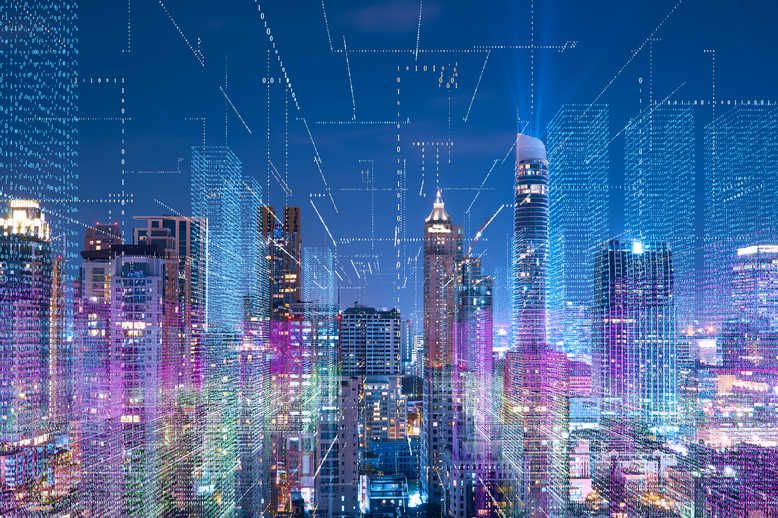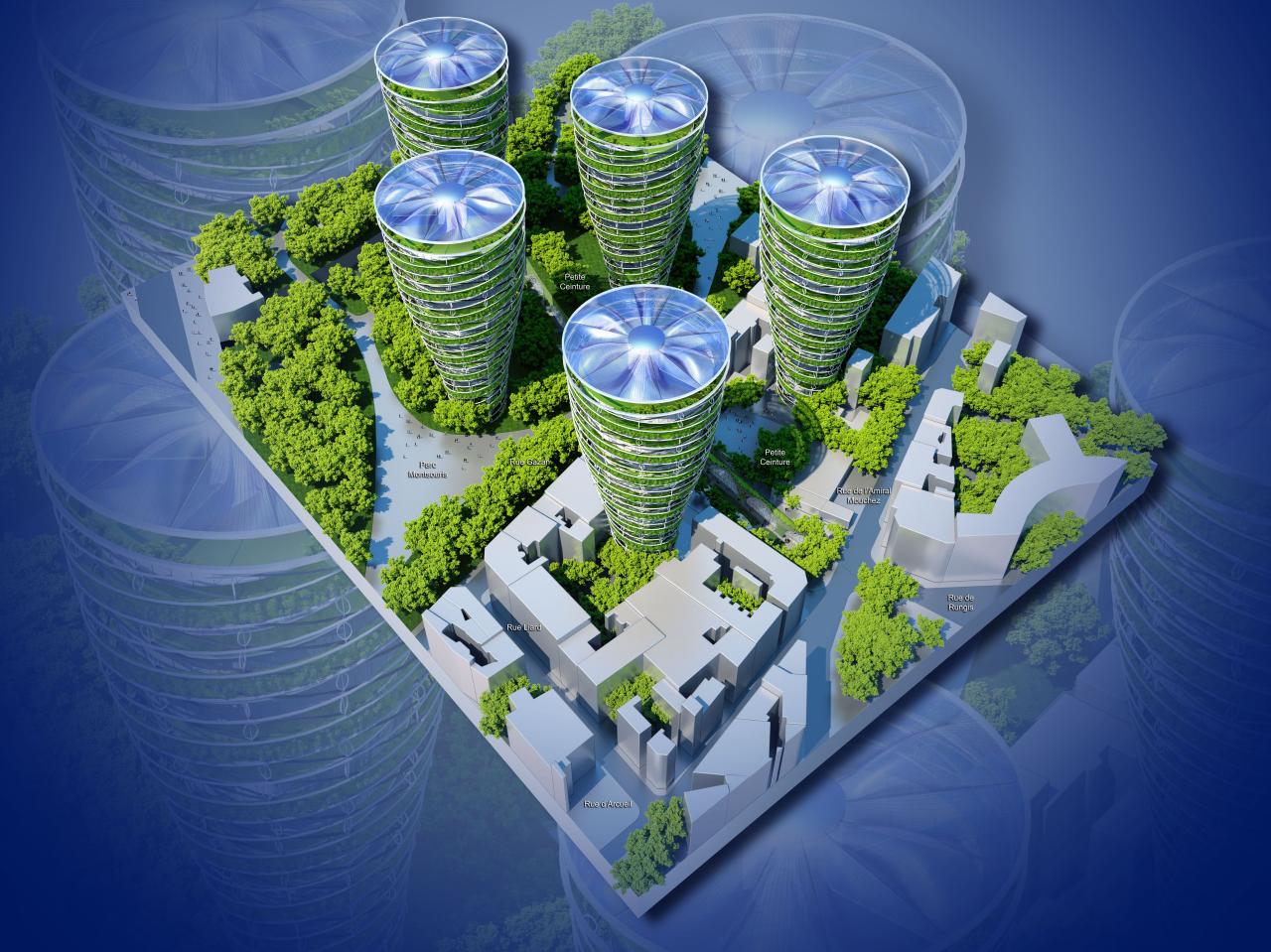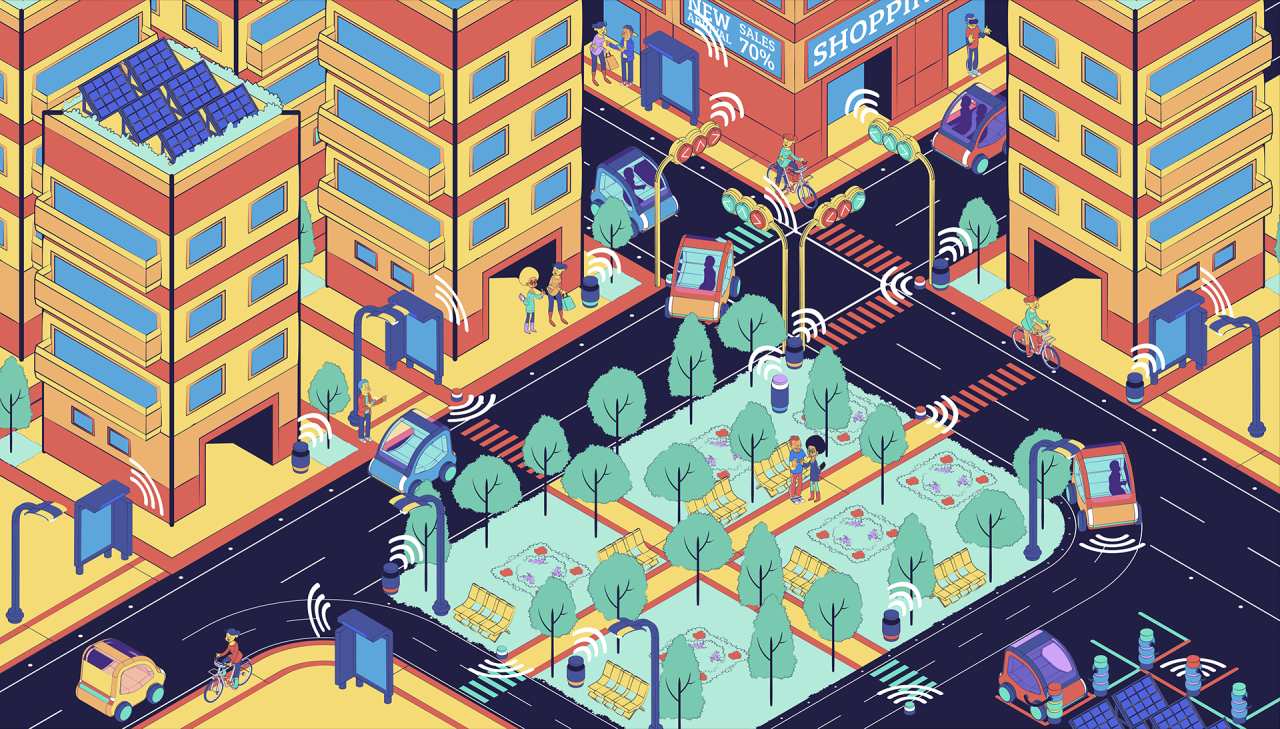The rapid pace of urbanization across the globe presents both immense opportunities and formidable challenges. As populations flock to urban centers, the demand for efficient services, sustainable infrastructure, and an enhanced quality of life intensifies. At the forefront of addressing these complex needs is the burgeoning concept of smart cities, urban environments leveraging cutting-edge technology and data to fundamentally transform the way people live, work, and interact with their surroundings. Far beyond just interconnected gadgets, a smart city is a living ecosystem where intelligence, connectivity, and sustainability converge to create more livable, resilient, and responsive urban landscapes. This isn’t merely about technological upgrades; it’s about a holistic re-imagination of urban life, genuinely transforming lives in profound ways.
The Imperative for Smart Cities: Addressing Urbanization’s Challenges
To truly grasp the critical importance and transformative potential of smart cities, it’s essential to understand the immense pressures and complex problems driven by global urbanization.
A. Rapid Urban Population Growth
The 21st century is undeniably the century of cities. For the first time in human history, more than half of the world’s population resides in urban areas, and this proportion is projected to reach nearly 70% by 2050.
- Massive Migration to Cities: People are continuously moving from rural areas to urban centers in search of economic opportunities, better education, and improved access to services. This rapid influx puts immense strain on existing infrastructure.
- Emergence of Megacities: The number of megacities (urban areas with over 10 million inhabitants) is rapidly increasing, creating unprecedented challenges in terms of managing scale, density, and diversity.
- Strain on Resources: Concentrated populations lead to increased demand for critical resources such as clean water, energy, food, and housing, often pushing resource systems to their limits.
B. Mounting Environmental Pressures
Cities are significant contributors to environmental degradation and are highly vulnerable to climate change impacts.
- High Carbon Footprint: Urban areas account for a disproportionately large share of global energy consumption and greenhouse gas emissions, primarily from transportation, buildings, and industrial activities.
- Pollution and Air Quality: Vehicle emissions, industrial activities, and energy generation in cities contribute to poor air quality, leading to significant public health issues and reduced quality of life.
- Waste Management Crisis: Rapid urbanization exacerbates waste generation, posing challenges for effective collection, recycling, and disposal, leading to landfill issues and pollution.
- Climate Change Vulnerability: Coastal cities face rising sea levels, while many urban areas are experiencing more frequent and intense heatwaves, floods, and storms, necessitating resilient infrastructure and adaptive strategies.
C. Deteriorating Urban Quality of Life
Without proactive measures, rapid urbanization can lead to a decline in the overall quality of life for city dwellers.
- Traffic Congestion and Commute Times: Increasing car ownership and inadequate public transportation infrastructure lead to chronic traffic jams, wasted time, increased fuel consumption, and higher stress levels for commuters.
- Inadequate Public Services: Overburdened public services, including healthcare, education, and sanitation, struggle to meet the needs of a growing and diverse urban population.
- Public Safety Concerns: Densely populated areas can face challenges related to crime, emergency response times, and general public safety.
- Aging Infrastructure: Many legacy cities grapple with aging infrastructure—roads, bridges, water pipes, power grids—that is no longer adequate for modern demands and requires significant investment for repair or replacement.
- Digital Divide: Despite increased connectivity, disparities in access to high-speed internet and digital literacy can exclude segments of the population from economic opportunities and essential services.
These interwoven challenges underscore the urgent need for a more intelligent, efficient, and sustainable approach to urban planning and management, paving the way for smart city initiatives.
Core Pillars of a Smart City: Building Intelligent Urban Ecosystems
A smart city is a complex, interconnected system, built upon several foundational technological and philosophical pillars that work in synergy to create a truly intelligent urban environment.
A. Advanced Digital Infrastructure and Connectivity
The bedrock of any smart city is a robust, pervasive, and high-speed digital infrastructure.
- Ubiquitous Connectivity: This includes extensive deployment of high-speed broadband (fiber optics), 5G networks, and low-power wide-area networks (LPWAN) like LoRaWAN or NB-IoT to connect countless sensors and devices across the city.
- IoT Sensor Networks: A dense network of various sensors embedded in roads, streetlights, waste bins, public transport, and buildings. These collect real-time data on everything from traffic flow and air quality to parking availability and energy consumption.
- Data Platforms and Cloud Computing: Scalable cloud infrastructure (public, private, or hybrid) is essential for ingesting, storing, processing, and analyzing the massive volumes of data generated by urban sensors and systems. Centralized data platforms provide a single source of truth for urban insights.
- Cybersecurity Frameworks: Given the interconnectedness and criticality of smart city infrastructure, robust cybersecurity measures are paramount to protect data privacy, prevent cyberattacks on critical systems (e.g., power grids, traffic control), and ensure the resilience of the digital backbone.
B. Data Analytics and Artificial Intelligence (AI)
Data is the fuel, and AI is the engine that drives intelligence in a smart city.
- Real-time Data Processing: Platforms capable of ingesting and analyzing streaming data in real-time to enable immediate decision-making (e.g., dynamic traffic light adjustments, immediate waste bin fullness alerts).
- Predictive Analytics: AI models analyze historical and real-time data to forecast future urban phenomena (e.g., predicting traffic congestion hotspots, anticipating energy demand spikes, forecasting pollution levels, predicting crime patterns).
- Machine Learning for Optimization: ML algorithms are used to optimize various urban services, from public transport routes and energy distribution to waste collection schedules and resource allocation, finding efficiencies that human planning cannot.
- Computer Vision: AI-powered cameras analyze traffic flow, pedestrian movement, parking violations, and public safety incidents, providing actionable insights for urban management.
- Generative AI for Urban Planning: Emerging use of generative AI to quickly prototype urban designs, simulate zoning changes, or optimize building layouts based on complex criteria.
C. Sustainable and Green Technologies
Smart cities are inherently designed with environmental responsibility at their core, leveraging technology for sustainability.
- Smart Energy Grids: Intelligent grids that optimize electricity distribution, integrate renewable energy sources (solar, wind), manage demand-response programs, and reduce energy waste through smart meters and real-time monitoring.
- Smart Water Management: Sensor networks monitor water consumption, detect leaks in real-time, optimize irrigation systems for public spaces, and manage wastewater treatment more efficiently.
- Smart Waste Management: IoT-enabled waste bins signal when they need emptying, optimizing collection routes and reducing fuel consumption and emissions. Advanced recycling and waste-to-energy technologies are integrated.
- Green Building Technologies: Promoting energy-efficient building designs, smart HVAC systems, and renewable energy integration in new and existing constructions.
- Urban Green Spaces and Biodiversity: Using data to monitor and optimize urban parks, green roofs, and biodiversity initiatives, enhancing ecological balance and citizen well-being.
D. Citizen-Centric Services and Engagement Platforms
The ultimate goal of a smart city is to improve the lives of its inhabitants, which requires active citizen engagement and accessible services.
- Digital Citizen Portals: Online platforms and mobile apps that provide citizens with easy access to public services (e.g., permits, registrations, bill payments), information (e.g., public transport schedules, event listings), and channels for feedback.
- Open Data Initiatives: Governments making non-sensitive urban data publicly available (e.g., traffic data, air quality data) to foster transparency, encourage innovation by third-party developers, and enable civic engagement.
- Participatory Platforms: Tools that allow citizens to directly participate in urban planning, policy-making, and community projects through digital voting, feedback mechanisms, and crowdfunding.
- Personalized Urban Experiences: Leveraging data to provide personalized information and services, such as customized public transport recommendations, localized event alerts, or tailored health and safety advisories.
E. Integrated Governance and Policy Frameworks
Technology alone is not enough. Effective smart cities require integrated governance, forward-thinking policies, and collaboration across public and private sectors.
- Cross-Departmental Collaboration: Breaking down silos between traditional city departments (e.g., transport, utilities, public safety, urban planning) to share data and coordinate initiatives.
- Data Governance and Privacy Laws: Establishing clear legal frameworks for data collection, usage, sharing, and ensuring robust protection of citizen privacy.
- Public-Private Partnerships (PPPs): Collaborating with technology companies, research institutions, and private sector innovators to deploy and manage smart city solutions, leveraging private expertise and funding.
- Adaptive Regulatory Environments: Developing agile regulatory frameworks that can adapt to rapid technological advancements and facilitate experimentation with new smart city solutions.
Transformative Impacts: How Smart Cities Are Changing Lives
The synergistic application of these pillars leads to profound, measurable transformations across various facets of urban life, making cities more livable, sustainable, and prosperous.
A. Revolutionizing Urban Mobility and Transportation
Smart cities are fundamentally reshaping how people move, addressing perennial challenges like congestion and inefficient public transport.
- Dynamic Traffic Management: Real-time data from sensors and cameras enables AI-powered traffic lights to dynamically adjust timings, optimizing flow, reducing congestion, and cutting down on commute times.
- Smart Parking Solutions: Sensors detect vacant parking spots, guiding drivers directly to them via mobile apps, reducing circling time, fuel consumption, and traffic caused by parking searches.
- Optimized Public Transportation: Data analytics optimizes bus and train schedules, predicts demand, and informs route adjustments, making public transport more efficient, reliable, and attractive.
- Integrated Multi-modal Transport: Seamless integration of various transport options (public transit, ride-sharing, bike-sharing, electric scooters) through single platforms, offering personalized and efficient journey planning.
- Autonomous Vehicles: Laying the groundwork for future autonomous vehicle integration, reducing accidents, optimizing traffic flow, and potentially redefining personal mobility.
B. Enhancing Public Safety and Emergency Response
Technology offers powerful tools for creating safer urban environments and improving emergency services.
- Predictive Policing and Crime Prevention: AI analyzes crime data, social patterns, and environmental factors to predict potential crime hotspots, allowing police to deploy resources more effectively and prevent incidents.
- Intelligent Surveillance: AI-powered cameras can detect unusual activity, identify suspicious behavior, or locate missing persons, providing real-time alerts to law enforcement (while balancing privacy concerns).
- Faster Emergency Response: Optimized routing for emergency vehicles (ambulances, fire trucks) using real-time traffic data, smart intersections, and predictive models can significantly reduce response times during critical incidents.
- Disaster Preparedness and Resilience: Smart sensor networks can monitor environmental conditions (e.g., flood levels, air quality after an industrial incident) and provide real-time data for disaster preparedness, early warning systems, and post-disaster recovery efforts.
C. Fostering Environmental Sustainability and Green Living
Smart cities are central to the global fight against climate change and promoting a healthier environment.
- Reduced Energy Consumption: Smart grids, smart meters, and intelligent building management systems optimize energy usage, identify waste, and integrate renewable sources, significantly reducing the city’s carbon footprint.
- Improved Air and Water Quality: Real-time monitoring of air and water pollution allows for immediate identification of sources and triggers for intervention, leading to healthier urban environments. Smart irrigation conserves water in public green spaces.
- Efficient Waste Management: Smart bins and optimized collection routes lead to less fuel consumption for waste trucks, reduced emissions, and cleaner streets. Data insights also inform better recycling programs.
- Promotion of Sustainable Lifestyles: Smart applications can encourage citizens to adopt sustainable behaviors, such as using public transport, cycling, conserving energy, and participating in recycling initiatives.
D. Elevating Public Health and Social Well-being
Smart city initiatives directly contribute to healthier populations and enhanced community life.
- Personalized Healthcare Access: Digital platforms can facilitate easier access to healthcare services, remote consultations, and personalized health information based on local health data and individual needs.
- Enhanced Public Health Monitoring: Smart sensors can monitor environmental factors (e.g., air quality, pollen counts) that impact public health, providing alerts and informing public health interventions.
- Community Engagement and Inclusivity: Digital platforms can empower citizens to participate in civic life, access community resources, and connect with local services, fostering stronger, more inclusive communities.
- Smart Lighting and Noise Reduction: Adaptive street lighting systems reduce light pollution and energy consumption while enhancing safety. Intelligent urban planning can also minimize noise pollution in residential areas.
E. Driving Economic Growth and Innovation
Smart cities create fertile ground for new businesses, job creation, and economic prosperity.
- Attracting Investment: Cities that embrace smart technologies become more attractive to businesses seeking efficient infrastructure, a skilled workforce, and a high quality of life for their employees, fostering economic development.
- Job Creation: The development, deployment, and maintenance of smart city technologies create new jobs in technology, engineering, data science, and urban planning sectors.
- Innovation Ecosystems: Open data initiatives and smart city testbeds provide opportunities for startups and innovators to develop new applications and services, creating vibrant innovation ecosystems.
- Improved Business Operations: Smarter infrastructure (e.g., optimized logistics, reduced congestion, reliable utilities) directly benefits businesses by lowering operational costs and improving supply chain efficiency.
Implementing Smart City Solutions: A Strategic Roadmap
Building a successful smart city is a complex, long-term endeavor that requires careful planning, robust technology, and strong governance. It’s a journey, not a destination.
A. Develop a Clear Vision and Strategic Roadmap
Begin with a clear, citizen-centric vision for what the smart city aims to achieve. This vision should be co-created with diverse stakeholders (citizens, businesses, academia, government departments). Translate this vision into a strategic roadmap with defined goals, key performance indicators (KPIs), and a phased implementation plan, prioritizing initiatives that deliver tangible value early on.
B. Invest in Foundational Digital Infrastructure
Before deploying advanced applications, ensure the underlying digital infrastructure is robust and resilient. This includes:
- High-Speed Broadband and 5G: Deploying ubiquitous, reliable internet access.
- IoT Connectivity: Establishing a city-wide network for sensors (e.g., LoRaWAN, NB-IoT).
- Cloud and Data Platforms: Investing in scalable, secure cloud infrastructure and centralized data platforms for data collection, storage, and analytics.
- Cybersecurity Architecture: Building a comprehensive cybersecurity framework from the ground up to protect all interconnected systems and data.
C. Prioritize Data Governance and Citizen Privacy
Data is the lifeblood of a smart city, but its ethical management is paramount.
- Strong Data Governance: Establish clear policies and procedures for data collection, ownership, usage, sharing, and retention.
- Privacy by Design: Integrate privacy considerations into the design of all smart city solutions from the outset, adhering to strict data protection regulations (e.g., GDPR, CCPA).
- Transparency and Consent: Be transparent with citizens about what data is being collected and how it’s used, ensuring informed consent where required.
- Data Security: Implement robust encryption, access controls, and threat detection mechanisms to protect sensitive urban data from cyberattacks.
D. Foster Cross-Sectoral Collaboration and Partnerships
Smart cities cannot be built by any single entity. Collaboration is key.
- Inter-Departmental Synergy: Break down silos between city departments (e.g., transport, energy, public safety, planning) to encourage data sharing and coordinated initiatives.
- Public-Private Partnerships (PPPs): Engage with technology companies, startups, academia, and private sector innovators to leverage their expertise, funding, and cutting-edge solutions.
- Citizen Engagement: Actively involve citizens in the planning, design, and feedback processes through digital platforms, workshops, and community outreach, ensuring solutions meet real needs.
E. Adopt a Phased, Iterative, and Agile Implementation
Smart city development is an ongoing journey.
- Start Small, Scale Big: Begin with pilot projects in specific neighborhoods or for targeted services to test solutions, gather feedback, and demonstrate value before scaling.
- Agile Methodologies: Embrace agile principles, allowing for flexible planning, continuous iteration, and rapid adaptation to new challenges or opportunities.
- Continuous Monitoring and Optimization: Implement robust monitoring systems to track the performance of smart city solutions, collect data, and use insights for continuous optimization and improvement.
F. Build a Skilled Workforce and Promote Digital Literacy
The success of smart cities relies on human capital.
- Talent Development: Invest in training and upskilling programs for city employees, preparing them to manage, operate, and innovate with smart city technologies.
- Digital Literacy Initiatives: Launch programs to improve digital literacy among citizens, ensuring equitable access to and benefits from smart city services.
- Attracting Tech Talent: Create an attractive environment for tech companies and skilled professionals to move to and work in the city.
G. Embrace Open Data and Innovation Ecosystems
Promoting an open data philosophy can drive innovation.
- Open Data Portals: Make non-sensitive city data publicly available through open data portals, encouraging third-party developers, researchers, and citizens to create innovative applications and solutions.
- Smart City Testbeds: Create sandboxes or living labs where startups and researchers can test and develop new smart city technologies in a real-world environment.
H. Ensure Financial Sustainability and Diverse Funding Models
Smart city initiatives require significant, sustained investment.
- Diverse Funding: Explore various funding models beyond traditional government budgets, including public-private partnerships, grants, green bonds, and impact investing.
- Value-Based Investment: Focus on demonstrating the clear economic, social, and environmental value of smart city projects to justify investment and secure long-term funding.
The Future Trajectory of Smart Cities: Beyond Connectivity
The evolution of smart cities is continuous, driven by technological advancements and increasingly sophisticated approaches to urban governance.
A. Hyper-Converged Urban Operating Systems
The future will see a deeper convergence, moving towards an integrated urban operating system.
- Unified Data Platforms: All urban data (traffic, energy, waste, social services) will feed into a single, comprehensive, real-time data platform, breaking down all remaining departmental silos.
- AI-Driven Orchestration: Advanced AI will orchestrate and optimize all urban services, dynamically allocating resources, predicting needs, and managing complex interdependencies across the city.
- Predictive Urban Planning: AI will move beyond just managing current operations to actively shaping future urban development, simulating the long-term impact of planning decisions before they are enacted.
B. Greater Emphasis on Human-Centric Design and Well-being
While technology is foundational, future smart cities will prioritize human experience and well-being even more.
- Emotional AI and Behavioral Analytics: AI will analyze aggregated human behavior patterns (anonymously) and even subtle emotional cues from public spaces (e.g., through sentiment analysis of social media) to design more responsive and empathetic urban environments.
- Personalized Urban Experiences: Leveraging individual preferences (with consent) to offer highly customized experiences, from personalized transport routes to tailored recreational activity suggestions.
- Mental Health and Digital Wellness: Smart cities will proactively integrate features that promote mental health and digital wellness, using data to identify areas of stress or social isolation and deploy interventions.
- Inclusive AI and Bias Mitigation: Ensuring that AI algorithms used in smart cities are rigorously audited for bias and designed for maximum inclusivity, preventing discrimination in service delivery or resource allocation.
C. Autonomous Infrastructure and Robotics
Physical infrastructure within smart cities will become increasingly autonomous.
- Self-Healing Grids: Power grids that can autonomously detect and repair faults, re-route power, and optimize energy flow without human intervention.
- Autonomous Public Transport: Fleets of self-driving buses, taxis, and delivery vehicles that operate seamlessly, optimizing routes and schedules in real-time.
- Robotic Urban Maintenance: Autonomous robots performing tasks like street cleaning, infrastructure inspection, waste collection, and even minor repairs, reducing human exposure to hazardous tasks.
- Modular and Adaptive Infrastructure: Buildings and urban elements designed with modular components that can be easily reconfigured or replaced by robotic systems to adapt to changing needs or environmental conditions.
D. Deep Integration with Digital Twins and Metaverse Concepts
The Digital Twin concept, currently applied to individual buildings or systems, will expand to encompass entire cities.
- City-Scale Digital Twins: A living, virtual replica of an entire city, continuously updated with real-time data, enabling hyper-realistic simulations for urban planning, disaster response, and infrastructure management.
- Metaverse as an Urban Layer: The metaverse could serve as an interactive digital layer over the physical city, allowing citizens to interact with urban services, participate in virtual public forums, or even design elements of their neighborhoods in a highly immersive way.
- Virtual Testing Grounds: New urban initiatives, infrastructure projects, or public policies could be simulated and tested within the city’s Digital Twin before physical implementation, predicting outcomes and identifying potential issues.
E. Climate Resilience and Circular Economy as Driving Principles
The urgency of climate change will further cement sustainability as a core design principle for smart cities.
- Closed-Loop Urban Systems: Designing cities to operate on circular economy principles, where waste from one process becomes a resource for another (e.g., waste-to-energy, wastewater recycling, urban farming).
- Climate-Adaptive Infrastructure: Using AI and predictive modeling to design infrastructure that can dynamically adapt to extreme weather events, manage heat islands, and optimize for changing environmental conditions.
- Net-Zero Cities: A strong push towards creating cities that are net-zero in terms of carbon emissions, leveraging renewable energy, smart grids, and sustainable mobility solutions.
Conclusion
Smart cities are more than just a technological concept; they are a vital response to the accelerating challenges of urbanization and a profound vision for future living. By strategically integrating advanced digital infrastructure, ubiquitous data analytics, Artificial Intelligence, and sustainable technologies, urban centers are being transformed into intelligent, responsive, and resilient ecosystems. This transformation touches every facet of urban existence: revolutionizing mobility, enhancing public safety, driving environmental sustainability, elevating public health, and fostering dynamic economic growth.
While the journey towards fully realized smart cities requires significant investment, robust data governance, and a commitment to cross-sectoral collaboration, the transformative benefits for citizens are undeniable. From real-time traffic optimization to predictive maintenance of infrastructure, from personalized public services to enhanced disaster preparedness, smart cities are genuinely transforming lives for the better. As these urban landscapes continue to evolve with hyper-converged systems, human-centric design, and autonomous infrastructure, they will stand as the ultimate testament to humanity’s capacity to build more efficient, equitable, and sustainable futures for generations to come.














